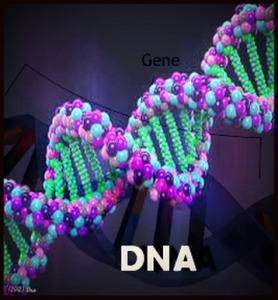Difference between DNA and Genes

Difference between DNA and Genes
In the tunnel of science, you must have heard about DNA in comparison with RNA. But DNA is itself related very well with genes. Most people refer to both of them of the same category but they belong to different categories. This post of Researchpedia is intended to expose the difference between DNA and Genes. Here is the description of the two first:
What is DNA
DNA fulfills the acronym of Deoxyribonucleic acid. This molecule was first discovered in the 1860s by Johann Friedrich Miescher. It is a molecule present in a living cell. Adding more it is a chain of connectivity that shows the functioning of different cells in the body. DNA is composed of 4 basic chemical units adenine (A), cytosine (C), guanine (G), and thymine (T). Adenine pairs with thymine and guanine pairs with cytosine. The arrangement of A, T, C, and G identifies the exclusive genetic code that directs the synthesis of molecules needed for growth.
What is Genes
Genes are the fundamental traits that are inherited. They are the specific sequence of DNA containing genetic information. It determines how the cell will get functioned and lives inside your body. The change in the sequence of genes leads to mutation. 20,000-25,000 genes are found in human beings that make up 3% of the entire DNA. The rest 97% of the DNA functions are uncertain.
DNA vs Genes
Variance in Connection
DNA is an umbrella term that includes two copies of 23 chromosomes in a child, one relates to male parent and the other is from the female parent as a result of meiosis. Comparatively, few cells determine what is inherited from parents? This is called genes. This is how Gene is a part of DNA. On the whole, the gene is part and determines the functioning of cells.
Location
The genes are arranged in the middle part of the chromosome whereas the noncoding DNA is located on the telomeres and centromeric region of the chromosome. Furthermore, genes are positioned on p and q arms however DNA is located on microsatellite and minisatellite regions of the chromosome. The microsatellite is a set to a repeated DNA sequence at a specific location on the chromosome that helps with genetic fingerprinting. Minisatellite is the made of sets of longer repeats.
Part-Whole Relationship
The human body contains the chains called nucleotide composed of three parts; a phosphate molecule, a sugar molecule, and a structure called a nitrogenous base that will determine how to make proteins and force them in cell production. DNA is a full body of human beings in which Genesis a chapter to study. In this world, all human beings depend on their genes as they are the stagnant process to pass them to prospective generations.
- The notion of Chromosomes: DNA contains chromosomes that refer to the particular traits like eye color, hair color so the chapters including traits will be called a gene. It defines a gene as a small piece in the booklet of DNA.
- Are they recent approaches? DNA is a recent one that extracted from genes. The study of genetics has got fame in this era. Scientists are more inclined to add enhancement in the DNA approach. Genes have been studies for a long time now on the other hand; DNA is a recent approach in the tunnel of medical sciences.
Conclusion
Concluding the whole, DNA is a skinny form which contains chromosomes. It gives full information needed in building a living organism. In a sense, DNA is a booklet of information that makes every person extraordinary. Surprisingly, 99.9% of the DNA is arranged in a similar pattern except for the remaining 0.1% that comprises three million base pairs! So DNA contains genetic instructions, on the other hand, genes possess hereditary information. Gene is a smaller part lies in the booklet that gives the information of cells functioning in a human. What is your opinion?
https://geneticeducation.co.in/dna-vs-gene-a-comparison-for-beginners/
https://www2.le.ac.uk/projects/vgec/schoolsandcolleges/topics/dnageneschromosomes


Leave a Reply